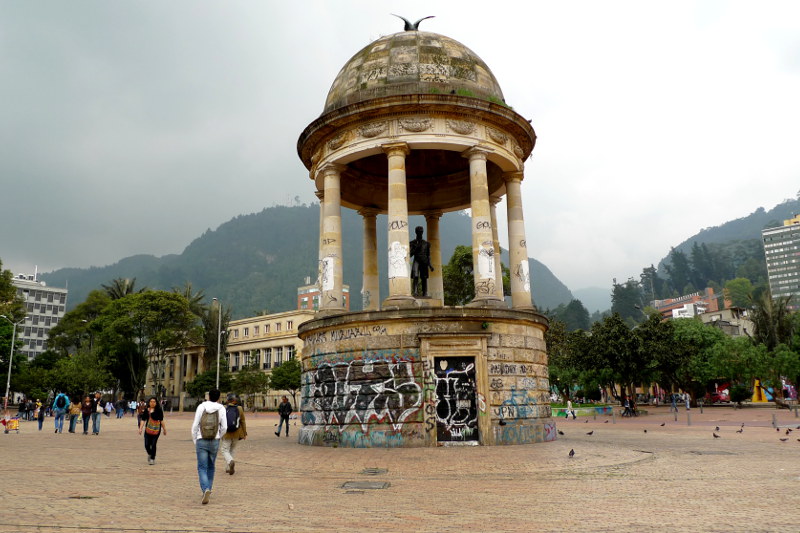I think it’d be really easy to fall in love with this place. I thought this as I wandered up a hill in Candelaria at dusk. The air was crisp and filled with the smell of wood in the fireplace. The people are friendly, nice, and easy to talk to. They let me wander and do my curiosity thing unhindered.
It’s also incredibly real. There are no tourist facades. There are no pretenses. There’s no pretending the city is something it is not. It is exactly as it appears: it’s violent, it’s wildly beautiful, it’s both falling and bursting apart at the seams, the people are outspoken and passionate, and it’s a place that causes you (as a traveller) to question your every belief. I would expect nothing less from a culture that is descendant from both the Tairona and Muisca peoples.
Prostitution is legal. Abortion is legal. Possession of marijuana and cocaine in legal. There are loads of birds, llamas, and street dogs wandering the markets but you don’t see them being abused as you do in other countries. Children and women are treated equally.
Geographically, Bogotá is in the middle of the Andes. The altitude of the city is 2,640m (8,660 ft) above sea level. This is more than double Calgary, which is at 1,048m (3,438 ft) but less than Keystone, which is at 2,830 m (9,280 ft). I definitely felt the effects of the altitude while biking and walking but it didn’t make me sick like it did when I was in Colorado.
The weather during my stay was volatile; October and November are the rainy seasons for the Andes. And, when it rains it is like someone is pouring buckets of water over your head. Sudden rivers of water and hail float down the streets making it dangerous to cross. But when the sun comes out it transforms the city into a green, lush, paradise.
But none of you want to hear about this stuff. You want to hear about whether or not it is safe to travel in Colombia…
You hear so many bad stories when you first arrive in Bogotá about personal safety, people getting mugged, and general acts of violence. I travelled by myself and was constantly bombarded with people telling me to never go out by myself, never walk by myself, don’t trust soldiers or police, never show my camera, to hide my money in public places, etc.
The only problems I had were when I was with other Westerners. When I was by myself, people left me alone… big camera and all. I sat with street vendors and asked them questions about where they were from. I talked to boys on the street who wanted to sing rap songs for some coins. I talked to soldiers in La Candelaria. I asked questions of every single person who wanted to talk because I was so disgusted by my appalling Spanish that I wanted complete immersion… warts and all. Locals are certainly happy to oblige and make corrections when needed. Some even made fun of my mistakes… and I let them because my mistakes were funny.
My point is that if you are open to people, open to experiences, and treat everyone with the respect that they deserve, you experience the wonderful side of people. It’s true that there are “bad apples” in this world but people, in general, want to do good. It’s when you trigger someone’s anger that they behave badly. All the confrontations I saw were because things were said because of cultural misunderstandings… things that pushed people too far… and Bogotá has a passionate, violent undercurrent that is easy to stir.
But, in my Bogotá experience, I discovered a refreshing mix of intelligent people: some from the city, some from other Latin American countries like Bolivia, Ecuador, Argentina, and many who come from small towns in the Andes. I’ve often said that places begin to look the same the more you travel… and architecture has some sort of base in European colonial culture. It’s the people that make travel interesting… and Bogotá definitely has interesting people.
